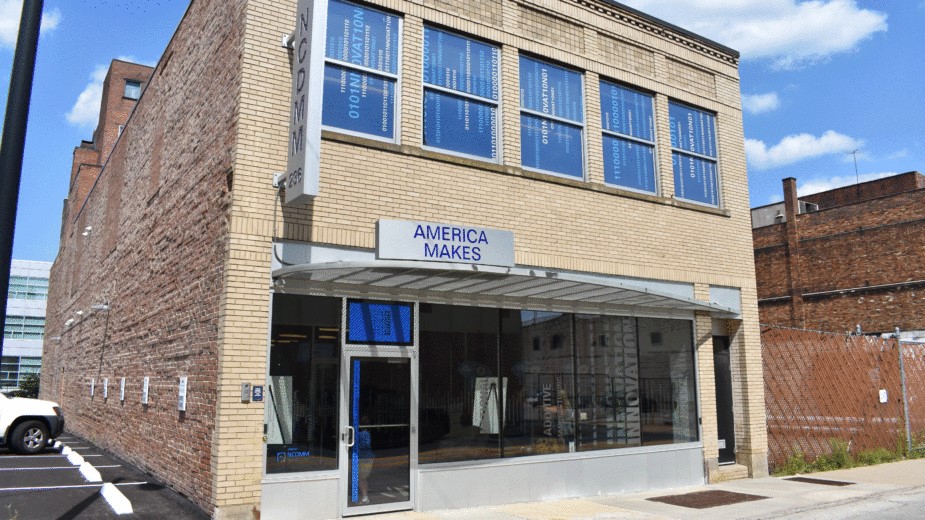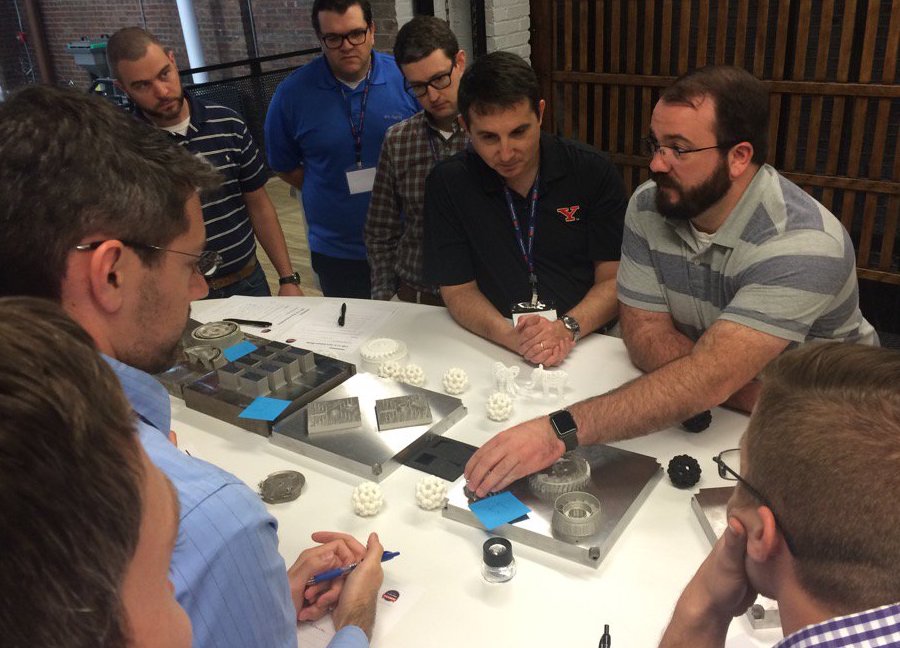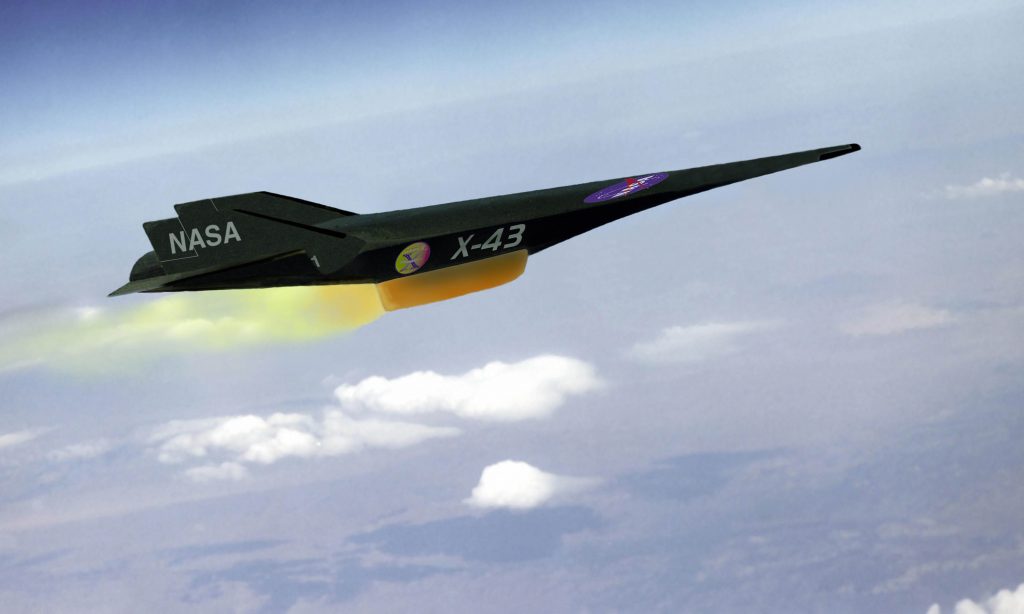US national 3D printing accelerator America Makes has awarded a team led by aerospace manufacturer Boeing $500,000 in US Air Force Research Laboratory (AFRL) funding.
Having been selected as part of America Makes’ ‘MAGMA’ Project Call, Boeing will now work with RPM Innovations and Hexagon to develop technologies related to the 3D printing of parts with high-velocity applications. Specifically, the team is set to continue honing their winning design approach, which is understood to improve the reliability of those components at most risk of distortion at hypersonic speeds.
“These efforts will serve to benefit the manufacturing of a wide variety of products which feature complex geometric features,” said America Makes’ Technology Director, Brandon D. Ribic, Ph.D. “It is anticipated important lessons learned from these efforts will help to improve yield of complex structures incorporating AM components.”

America Makes’ innovation drive
Since it was founded in Youngstown, Ohio, back in 2012, America Makes has worked tirelessly to accelerate the adoption of 3D printing in a way that advances the USA’s global manufacturing competitiveness. One of the primary ways the institute has sought to achieve this, is via its Project Calls, through which it offers backing to member organizations with fresh approaches to common 3D printing issues.
In the last 12 months alone, America Makes has launched several such initiatives, including its most recent Rapid Innovation Call (RIC), which saw it pledge another $500,000 towards projects that advance the maturation of 3D printing, targeting six different areas varying from in-situ monitoring and qualification, to part defect detection and lightweighting.
During June 2021, the institute also announced a $1.6 million Open Project Call, designed to encourage the development of innovative, cost-effective and energy-efficient additive manufacturing approaches. Also backed by the AFRL, the initiative not only saw America Makes continue to seek novel ways of mitigating defects, but target new training and high-temp material qualification methodologies as well.
More recently, the 3D printing accelerator has put more emphasis on seeking out ways of overcoming the issues around using additive manufactured parts at high velocities. Having introduced its $500,000 ‘LAVA’ Project Call last year, in which it invited non-DED approaches to preventing distortion at high-speed, America Makes has now followed this up with the similarly-named and targeted ‘MAGMA’ initiative.

Pouring $500k into high-speed R&D
Operating as part of America Makes’ Hypersonics Enabling Additive Manufacturing program, the organization’s Maturation of Additive Geometric Management Approaches or ‘MAGMA’ for High Mach Applications project, has been set up specifically to further the maturation of 3D printing technologies for deployment within high-mach applications.
When America Makes first issued its MAGMA Project Call in October 2021, it outlined how additive manufacturing is increasingly helping US firms reduce the lead times of custom, complex parts. However, at the time, the institute suggested that various factors can currently lead to “unacceptable variances in product geometry,” which prevent 3D printed parts from being used at high-speeds.
To overcome this, America Makes has since been inviting design and 3D printing proposals with the potential to yield a “measurable improvement in product-relevant geometric acceptance criteria.” As examples, the organization indicated that entries could range from statistical analyses to the creation of novel design tools, but chose to encourage innovation rather than mandate an approach.
While Boeing and RPM Innovations have now been unveiled as the winning MAGMA call entrants, the sensitive nature of their hypersonics-related research means that little has been made public about their submission. Given that RPM Innovation specializes in using DED 3D printing to manufacture and repair parts, however, it’s highly-likely that its Freeform process will be instrumental to the team’s approach.
Additionally, Ribic has said that the project’s findings could be used to “advance the supply chain’s understanding of AM technologies for a variety of high-mach applications,” but the fact that Boeing has taken point in the initiative, suggests that its application will relate closely to its core business, which revolves around aircraft, aerospace and defense manufacturing.

Hypersonic research in US defense
As global tensions continue to rise over Russia’s invasion of Ukraine, the importance of US hypersonic technologies has become clearer than ever before. In fact, the Russian military is said to have been testing its latest ‘Dagger’ missiles in the run up to the conflict, and used 3D printing to upgrade the engines of MiG-31 jets capable of carrying them.
Thankfully for the US and its allies, the country is no stranger to hypersonic research itself, and its Department of Defense (DoD) has often turned to 3D printing to achieve progress in this area. In October 2021, for instance, the DoD awarded $25.5 million to hypersonic R&D projects, which are expected to deploy 3D printing, machine learning and NDT methods to advance high-mach-speed flight.
At around the same time, the US Naval Surface Warfare Center Dahlgren Division (NSWCDD) also announced that it intended to double down on hypersonic R&D. Using advanced tech such as 3D printing, in partnership with Johns Hopkins University and the University of Miami, the organization said that it aimed to establish Dahlgren as the Surface Navy Lead in hypersonic weapon integration.
To stay up to date with the latest 3D printing news, don’t forget to subscribe to the 3D Printing Industry newsletter or follow us on Twitter or liking our page on Facebook.
For a deeper dive into additive manufacturing, you can now subscribe to our Youtube channel, featuring discussion, debriefs, and shots of 3D printing in-action.
Are you looking for a job in the additive manufacturing industry? Visit 3D Printing Jobs for a selection of roles in the industry.
Featured image shows the America Makes building in Youngstown, Ohio. Photo via America Makes.



